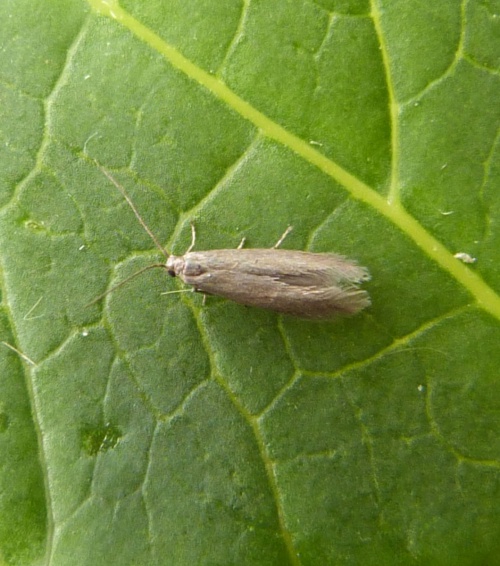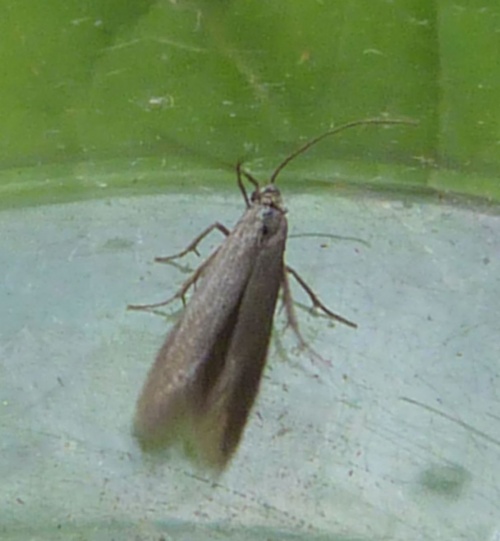Larch Case-bearer - Coleophora laricella
Wingspan 8 to10 mm. This is quite a dark species.
Anywhere that European Larch occurs.
The adults fly in June and July and are attracted to light.
The larvae feed on the needles of European Larch. When occurring in large numbers, entire trees can be damaged, the needles turning pale as the larvae eat them from within. A number of cases are built as the larvae grow, often in the centre of a floret of needles.
A common species in suitable habitat throughout most of the British Isles. In the Butterfly Conservation's Microlepidoptera Report 2011 this species was classified as common.
It appears to be uncommon in Leicestershire and Rutland, where there are few records. L&R Moth Group status = D (rare or rarely recorded).
Leicestershire & Rutland Map
Enter a town or village to see local records
MAP KEY:
Yellow squares = NBN records (all known data)
Coloured circles = NatureSpot records: 2020+ | 2015-2019 | pre-2015
UK Map
Species profile
- Common names
- Larch Case-bearer
- Species group:
- Moths
- Kingdom:
- Animalia
- Order:
- Lepidoptera
- Family:
- Coleophoridae
- Records on NatureSpot:
- 12
- First record:
- 28/06/2012 (Calow, Graham)
- Last record:
- 10/06/2023 (Poole, Adam)
Total records by month
% of records within its species group
10km squares with records
The latest images and records displayed below include those awaiting verification checks so we cannot guarantee that every identification is correct. Once accepted, the record displays a green tick.
In the Latest Records section, click on the header to sort A-Z, and again to sort Z-A. Use the header boxes to filter the list.






